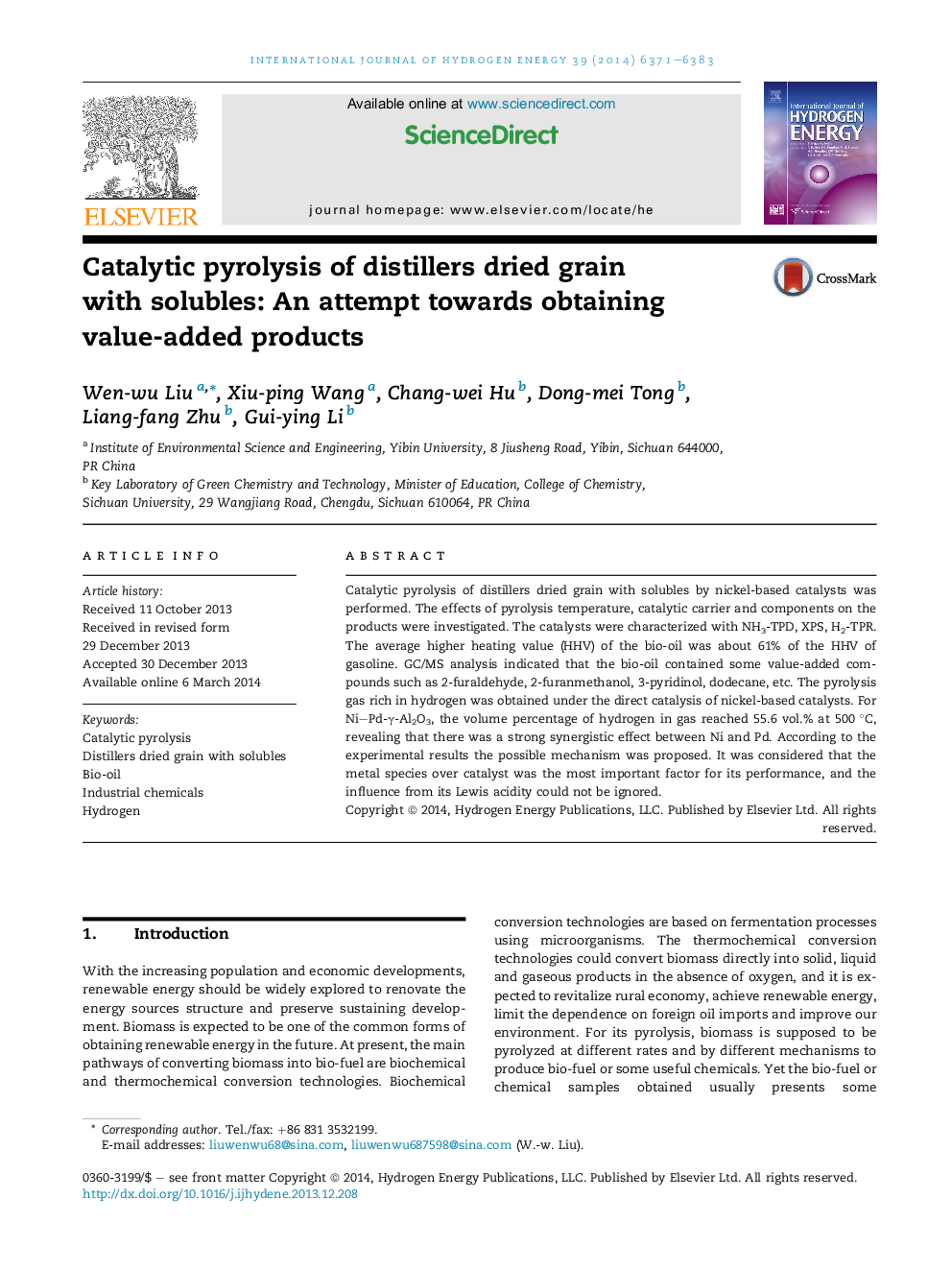| Article ID | Journal | Published Year | Pages | File Type |
|---|---|---|---|---|
| 1272830 | International Journal of Hydrogen Energy | 2014 | 13 Pages |
•55.6 vol.% of hydrogen in gas was achieved by direct catalysis of Ni–Pd/γ-Al2O3.•A synergistic effect between Ni and Pd on producing hydrogen was observed.•Acid sites over Ni–Pd/γ-Al2O3 might promote its performance of producing H2.•The predicted HHV of bio-oil was 25,739 kJ/kg, about 61% of that of gasoline.•The bio-oil contained some value-added compounds.
Catalytic pyrolysis of distillers dried grain with solubles by nickel-based catalysts was performed. The effects of pyrolysis temperature, catalytic carrier and components on the products were investigated. The catalysts were characterized with NH3-TPD, XPS, H2-TPR. The average higher heating value (HHV) of the bio-oil was about 61% of the HHV of gasoline. GC/MS analysis indicated that the bio-oil contained some value-added compounds such as 2-furaldehyde, 2-furanmethanol, 3-pyridinol, dodecane, etc. The pyrolysis gas rich in hydrogen was obtained under the direct catalysis of nickel-based catalysts. For Ni–Pd-γ-Al2O3, the volume percentage of hydrogen in gas reached 55.6 vol.% at 500 °C, revealing that there was a strong synergistic effect between Ni and Pd. According to the experimental results the possible mechanism was proposed. It was considered that the metal species over catalyst was the most important factor for its performance, and the influence from its Lewis acidity could not be ignored.
Graphical abstractFigure optionsDownload full-size imageDownload as PowerPoint slide
